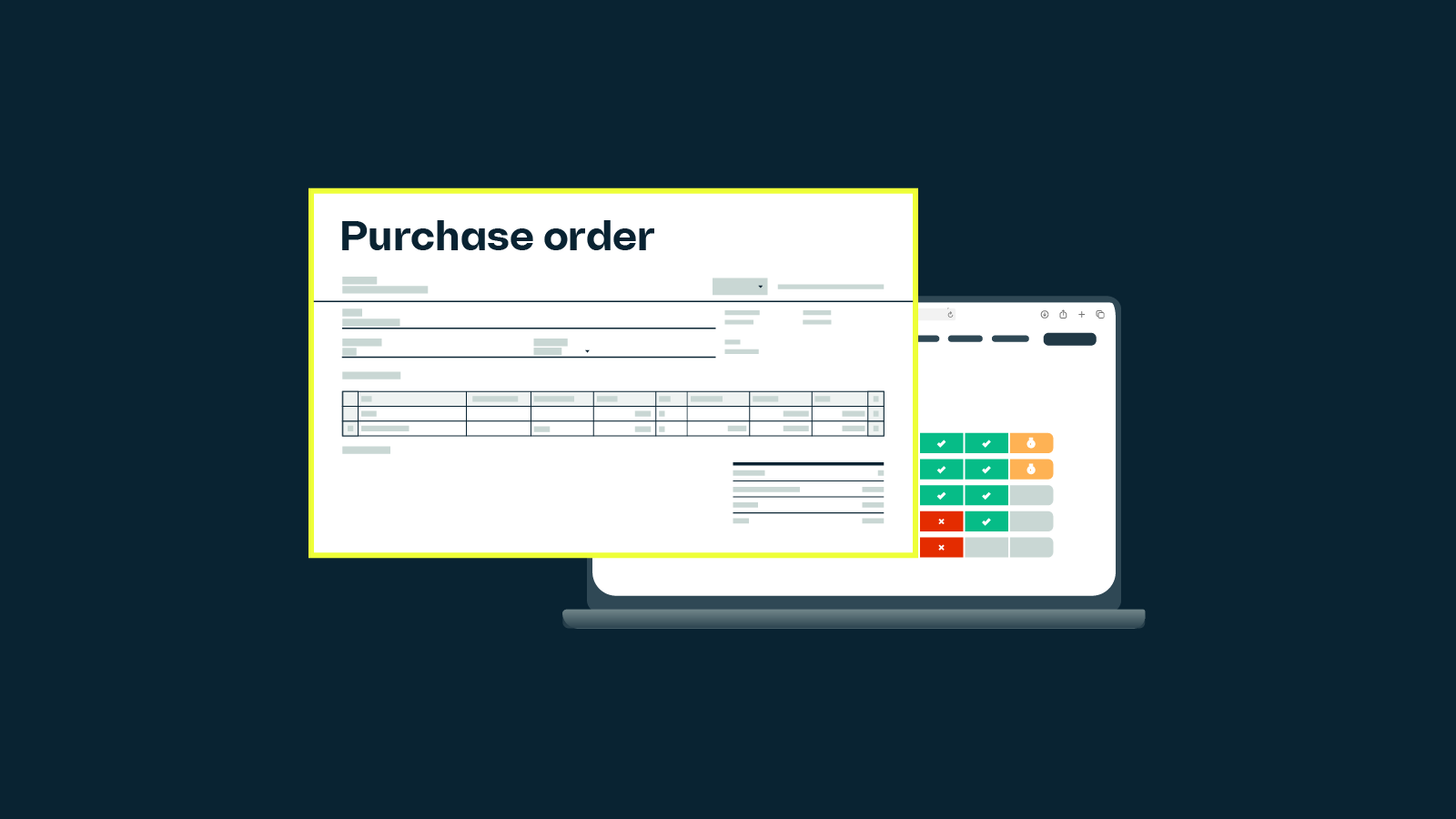How to create the perfect procurement management plan
A procurement management plan will ensure efficiency and alignment when your sales and manufacturing order volume increase. Here’s everything you need to know to make your own.

James Humphreys

A procurement management plan is essential for any manufacturing company as it provides a clear and concise guide for procuring the materials and supplies necessary for production runs.
By outlining the steps involved in procurement, from identifying suppliers to negotiating the types of contracts, procurement management plans ensure that all necessary materials and supplies arrive promptly and efficiently. In today’s competitive marketplace, a strong procurement management plan can give your manufacturing company a significant advantage over your rivals. By carefully project planning and executing your procurements, you can obtain the best possible prices for the materials and supplies you need while ensuring that delays in receiving necessary items do not disrupt your project scheduling.
An effective procurement management plan can help you save money, improve your company’s efficiency, and gain a competitive edge.
That’s why we’ve put together this article to help you understand and build your own procurement processes.

What is a procurement management plan?
Procurement management plans are documents that define a particular project scheduling requirements and lay down the steps required to get into the final contract.
The plan sets out how the procuring organization will acquire the goods and services it needs, including:
- Specifying what needs to be procured
- Estimating costs of purchases
- Setting timelines for reorders
- Assessing risks within the supply chain
A procurement management plan is important for ensuring that project planning stays on track and within budget. It also helps to ensure that all stakeholders know the procuring organization’s expectations and can provide input at various stages of the process. It is also important to communicate the project planning to all stakeholders to know their roles and responsibilities concerning procurement.
The procurement management plan based on reviews and regular updates to ensure that it remains relevant and fit for purpose.
If you are responsible for procuring goods or services for a project, then you must have a procurement management plan in place. This document will help you stay on track and within budget while ensuring that all stakeholders know your expectations.
Why does a procurement management plan matter?
Procurement management is a process that helps organizations to acquire goods and services efficiently and cost-effectively.
An effective procurement management plan sets the direction for the organization’s procurement activities and ensures that they are aligned with its overall business strategy. There are many benefits of having a procurement management plan in place. Perhaps the most important one is that it can help organizations save money. With a good procurement plan, organizations can avoid overspending on unnecessary items or paying more than necessary for the items they do need.
Another benefit of having a procurement management plan is that it can help to streamline the procurement processes.
Organizations can avoid confusion and wasted time and effort when procuring goods and services by having a clear plan.
Finally, procurement management plans can help ensure internal policies and regulations compliance. By having a clear and concise plan in place, organizations can avoid penalties or other consequences that could arise from non-compliance.
Overall, there are many benefits to having a procurement management plan in place. Organizations that do not have such a plan may find themselves wasting money, time, and effort on unnecessary items or activities. Furthermore, they may also be at risk of violating internal policies or external regulations.
All organizations need to develop and implement a procurement management plan.

Components of a procurement management plan
A procurement management plan has three key components:
- The procurement strategy
- The procurement process
- The procurement control plan
The procurement strategy outlines how the project will procure goods and services. The strategy should consider the type of goods and services needed, the timing of purchases, and the budget.
The procurement process outlines the steps required that will be taken to procure goods and services. The process should consider the type of goods and services needed, the timing of purchases, and the budget.
The procurement control plan outlines how the project will control costs associated with procuring goods and services.
The plan should consider reducing costs, such as negotiating the types of contracts and bundling purchases. Here are the other components that need to go into a procurement management planning.
1. Statement of work
The statement of work is the document that describes the product or service that needs to be procured, as well as the objectives and requirements for that product or service.
2. Procurement baseline
The procurement baseline is a detailed description of the approved schedule, cost, and performance parameters for the procurement.
3. Source selection criteria
The source selection criteria are the factors for vendor management that will be used to evaluate potential prequalified vendors and select the best one for the project scheduling.
4. Types of contract
Four main types of contracts can be used in procurement:
- Fixed-price
- Time-and-materials
- Labor-hour
- Letter contracts
5. Evaluation methods
Two main evaluation methods can be used in procurement:
- Technical evaluations
- Cost or price evaluations
6. Contract administration
Contract administration manages the final contract after it has been awarded, ensuring that the vendor management plan meets its obligations and performance standards.
7. Claims and disputes
Claims and disputes are a common occurrence in procurement, and there are specific procedures that must be followed to resolve them.
8. Termination
Contract termination can occur for many reasons, including breach of the final contract, convenience, or mutual agreement between the parties.
9. Sustainment
Sustainment is maintaining and supporting the procured product or service after it has been delivered. It includes activities such as training, manuals, and spare parts.
By understanding and following the components of a procurement management plan, project scheduling can ensure that they procure the right products, materials, or services at the best value.

The role of the procurement management plan
The procurement management plan defines how the procurement process will be managed within the organization.
It ensures that all stakeholders know the procedures and processes to be followed during the procurement cycle. The procurement management plan ensures that the organization procures the right products and services at the right price. It helps in minimizing the risk associated with the procurement processes.
The procurement management plan helps optimize resource use during the procurement process.
It is important to ensure that all stakeholders know the organization’s procurement policies and procedures and that these are communicated to potential prequalified vendors. The procurement management plan should also outline the organization’s objectives in terms of procurement and how these objectives will be met. Finally, the plan should address vendor management, such as how supplier relationships will be managed and how the types of contracts will be negotiated with prequalified vendors.
Process of the procurement management plan
The process of the procurement management plan can be categorized into the following steps.
1. Define procurement objectives and strategy
The first step in developing a procurement management plan is to define the organization’s objectives for procuring goods and services, as well as the overall strategy that will be used to achieve these objectives.
2. Identify potential suppliers
Once the organization’s objectives and strategy have been defined, the next step is identifying potential suppliers who could provide the goods or services needed to meet these objectives.
3. Evaluate potential suppliers
After potential prequalified vendors have been identified, they must be evaluated to determine which is the best fit for the organization. This evaluation should consider factors such as price, quality, and delivery times.
4. Selecting a supplier
Once the evaluation process is complete, the organization will select a supplier and enter into a final contract with them.
5. Manage supplier performance
After a supplier has been selected and a contract has been signed, it is important to manage their performance to ensure that they meet the agreement’s terms. This includes monitoring their performance and taking action if there are any problems.
A procurement management plan is an important tool that can be used to ensure that an organization’s objectives for procuring goods and services are met.
By following the steps required above, organizations can develop a procurement management plan based on achieving their goals.

Create a procurement management plan in 7 steps
So, now you know everything you need to know when looking into putting together a procurement management plan.
The next step is getting it made and executing it. Here are seven steps you can follow to create your own procurement management plan.
1. Define procurement objectives
The first step in creating a procurement management plan is to define the objectives of the procurement process. What are the goals that need to be achieved through procurement? Once these objectives are clear, developing strategies for achieving them will be easier.
2. Develop procurement strategies
After the objectives have been defined, the next step is to develop strategies for achieving them. What are the most efficient and effective ways to procure the goods and services needed? This step will require research and analysis to identify the best options.
3. Create a procurement budget
Once the objectives and strategies have been developed, the next step is to create a procurement budget. This budget will be needed to cover the costs of all goods and services that need to be procured. It is important to ensure that the budget is realistic and achievable to avoid any problems later on.
4. Solicit bids from suppliers
The fourth step in the procurement process is to solicit bids from potential suppliers. This step is important to get the best prices for the goods and services needed. The bidding process should be fair and transparent to avoid any suppliers’ complaints.
5. Evaluate bids and select suppliers
After all the bids have been received, the next step is to evaluate them and select the best supplier. This supplier will need to meet all the requirements outlined in the procurement plan based on your needs. Once a supplier has been selected, a contract must be negotiated and signed.
6. Manage the procurement process
The sixth step in the procurement process is to manage the actual procurement process. This includes ensuring that all goods and services are delivered on time and within budget. It is also important to monitor the suppliers’ performance to ensure that they meet all the contract requirements.
7. Close out the procurement process
The final step in the procurement process is to close out the process. This includes ensuring that all payments have been made and all documents have been filed properly. Once the procurement process is complete, it will be necessary to evaluate the results and make necessary changes.

Finding an ERP system with procurement management planning features
When looking for an ERP system, it’s important to find one with procurement management project scheduling and planning features.
This will help you track your spending and ensure you’re getting the best possible prices for the products and services you need.
There are a few different ways to find an ERP system with procurement management planning features. One way is to ask other businesses in your industry what they use. Another way is to search online for reviews of different ERP systems.
Once you’ve found a few options, take some time to compare them.
Consider things like:
- Price
- Features
- Ease of use
Also, think about whether you need all the features each system offers.
You may not need everything available, so you don’t want to pay for features you’ll never use.
Once you’ve found the right ERP system for your business, implement it properly. Training your employees on how to use it is critical to its success. If they don’t know how to use it, they won’t be able to take full advantage of its features and benefits.
Want to start testing out ERP systems within your procurement management planning? Katana ERP software gives you all the tools you need to manage your sales, manufacturing, and procurement, all from one platform. Request a demo now and see firsthand why 1000s of other manufacturers entrust Katana with helping them grow their business.

James Humphreys
Table of contents
Get inventory trends, news, and tips every month
Get visibility over your sales and stock
Wave goodbye to uncertainty with Katana Cloud Inventory — AI-powered for total inventory control